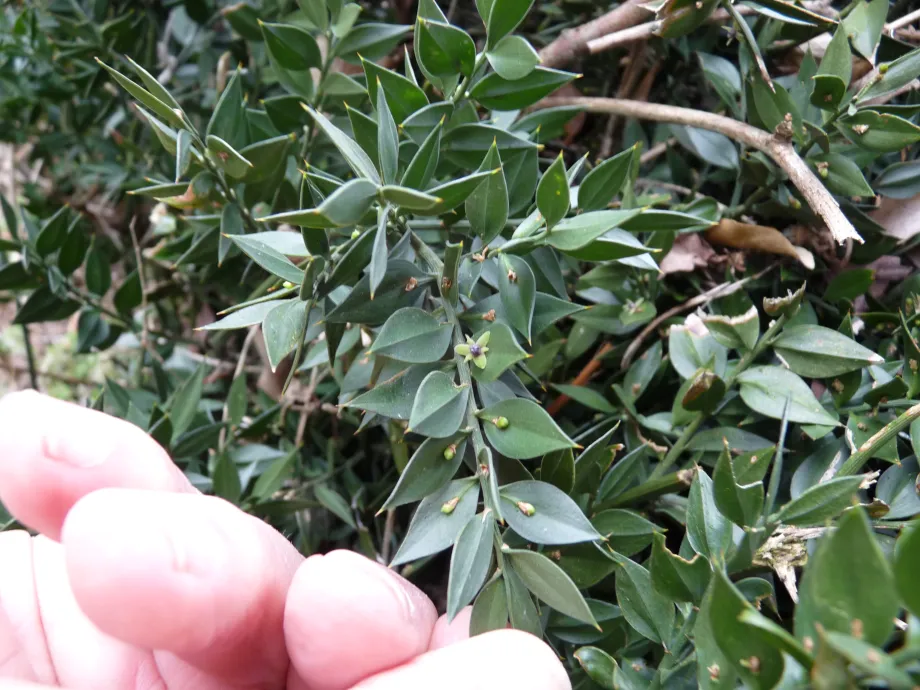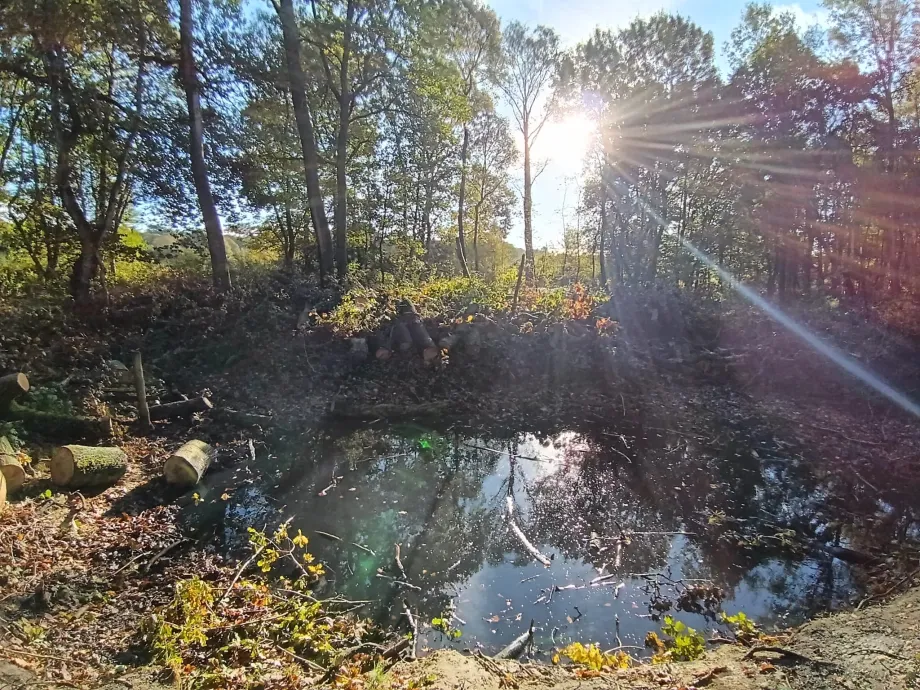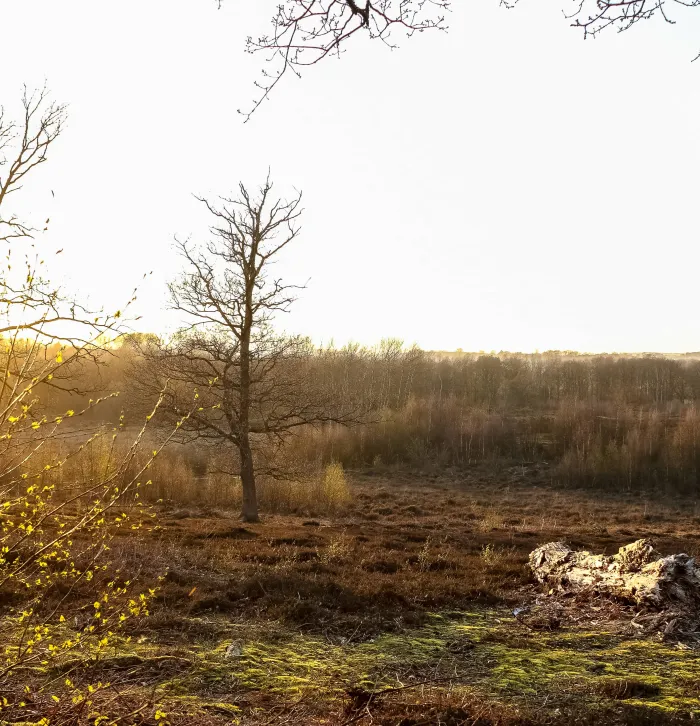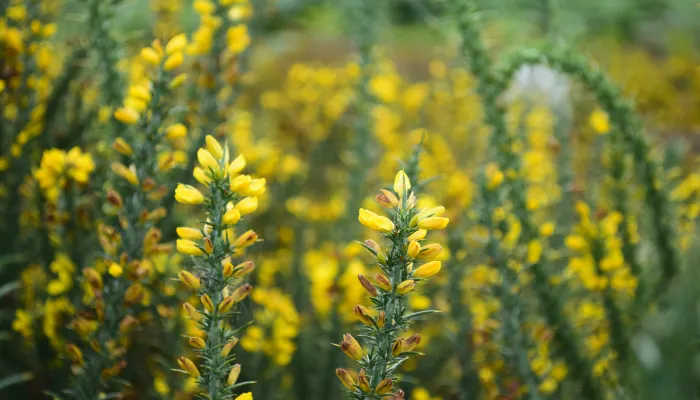
Gorse. Tim Horton
Red berries are very noticeable now on an unusual plant, not listed in Alex Lockton’s 2022 Flora of the reserve and possibly a garden escape, but certainly native on the Downs near Wilmington. In the Hothfield end of the Triangle is a low evergreen sub-shrub with diamond shaped thick ‘leaves’ ending in very sharp spines and stemless berries seemingly stuck to the reverse of each ‘leaf’. This is butchers broom or knee holly, Ruscus aculeatus (aculeatus is Latin for prickly). It is in the lily family so has parallel veins in the leaves. The ‘leaves’ are adapted stems, cladodes, with a tiny real leaf at their base. Small greenish stemless flowers appear in the middle of each cladode, male and female on different plants (dioecious), the females producing berries almost larger than the cladode. Bunches were used to scrub clean butcher’s blocks, and recent research has discovered antibacterial oil in the plant. It is an ancient woodland indicator, adapted to well-drained, poor soils and shady conditions. A cousin of non-native Alexandrian Laurel, Danae racemosa, with softer sprays of shiny evergreen cladodes used in floristry, it is another example of how plants adapt to survive difficult environments, just like the bog and heathland plants this reserve protects.

Butcher's Broom (Ruscus Asculeatus)
Come walking in November to soak up the full autumn display of colour and flying leaves while spotting fungus becoming more visible through the winter. Enjoy too the crunch of the thick layer of mast below the trees on the tolls. (I know one dachshund who will need carrying over the carpet of sweet chestnut prickles, so tender are her paws.) For it has been a mast year, right across the country, when all oaks, beeches, sweet chestnut and other trees and shrubs produce a bumper crop of seeds and fruit in amazing synchronicity. The last mast year was 2020 or 2022 in this country, experts differ. Phenology experts are exploring the links to weather patterns as trees usually produce the same quantity of flowers each year, but substantial precious energy is spent on developing a huge seed crop only every so often. Why? How? A bumper crop is thought to satiate the predators and leave seeds to germinate, while the intervening thin years help reduce the predator population, allowing seedlings to mature and replace ageing trees.
And talking of trees in the wrong place, the volunteers have spent several days coppicing and clearing brash in the former pig area and opening up a nearby pond. Allowing sun back onto these light-starved areas will encourage the return of oxygenating plants, followed swifty by dragonflies, frogs, and hopefully the return of great crested newts.

Pond at Hothfield

Hothfield Heathlands Nature Reserve
Rich in flora and fauna, this important reserve contains Kent's last four valley bogs and one of its few remaining fragments of open heath.

